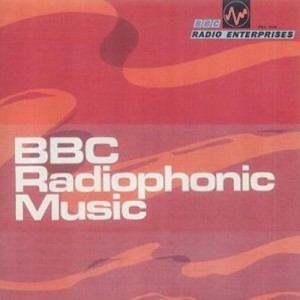
BBC Radiophonic Workshop
by Jason Ankeny For decades the BBC Radiophonic Workshop has produced the majority of incidental electronic music broadcast over British airwaves, their adherence to cutting-edge technology pioneering countless creative innovations. The department was formed in 1956, when senior studio manager Desmond Briscoe and music studio manager Daphne Oram agreed upon the need "for something other than normal orchestral incidental music; " a year later the Radiophonics staff produced one of their first experimental radio productions, "Private Dreams and Public Nightmares", and in 1958 they were awarded their own studios at the BBC's Maida Vale facility, complete with a budget of £2,000. The first popular television series to feature a Radiophonics soundtrack, Quatermass and the Pit, premiered soon after; before long the crew was responsible for scoring over 150 programs a year, the majority of them for TV. In 1963, the Radiophonics Workshop's Ron Grainer outlined his ideas for the theme to a new science fiction series being developed for television; a few weeks later the completed track was produced by Delia Derbyshire, the end result -- the title theme for the cult classic Doctor Who -- becoming perhaps the most popular piece in the BBC oeuvre. (Grainer also went on to author much of the incidental music heard in the groundbreaking series The Prisoner.) In 1964, John Read combined flute and bass with electronic sounds, the first time musicians were employed in tandem with machines; now a BBC trademark, it's a convention that still remains in place today. Still, the electronic resources at the Radiophonics staff's disposal were fairly primitive throughout much of the 1960s, consisting primarily of sine and square waves as well as white noise; only at the end of the decade did they acquire their first Moog and VCS3 synthesizers. By the mid-'70s, the Radiophonics arsenal also included a Roland Vocoder, its disembodied vocal textures first used by Malcolm Clarke in an award-winning adaptation of Ray Bradbury's And There Shall Come Soft Rains. In 1977, Paddy Kingsland introduced polyphonic synths on his theme for Radio 4's PM show, and three years later he was the first to use a Fairlight CMI in his score for a TV adaptation of The Hitch-Hiker's Guide to the Galaxy. By 1985, all of the Radiophonics studios were equipped with samplers, with Apple Macs installed a year later; by the end of the decade, a totally automated studio was up and running, complete with MIDI routing, and by the 1990s, hard-disk recording and sequencing were the norm. Throughout its long existence the Radiophonics Workshop also released a number of albums, many of them sampled endlessly by contemporary electronica acts.
查閱更多BBC Radiophonic Workshop :
隨時上JOOX欣賞 BBC Radiophonic Workshop 的歌曲!每當說到一位擁有出色歌曲和專輯的歌手時,我們一定會想到擁有 1 粉絲的BBC Radiophonic Workshop。如果你也正在尋找 BBC Radiophonic Workshop 的歌曲,那就太好了!JOOX將會為你提供 BBC Radiophonic Workshop 的MV和歌曲合輯,你必會喜歡這些歌曲!





